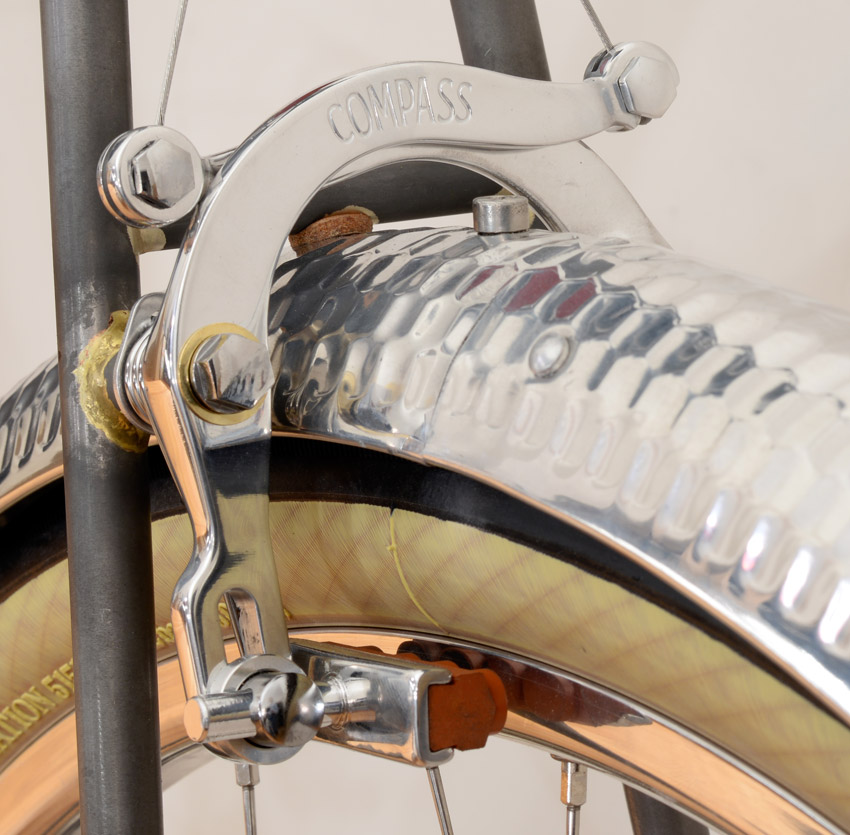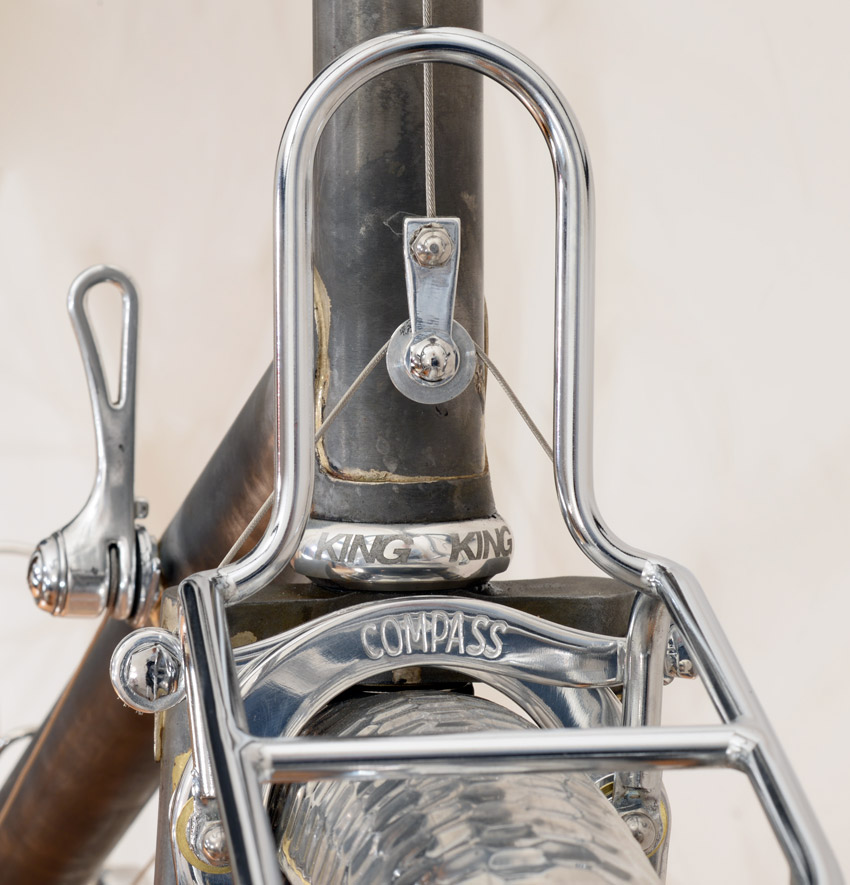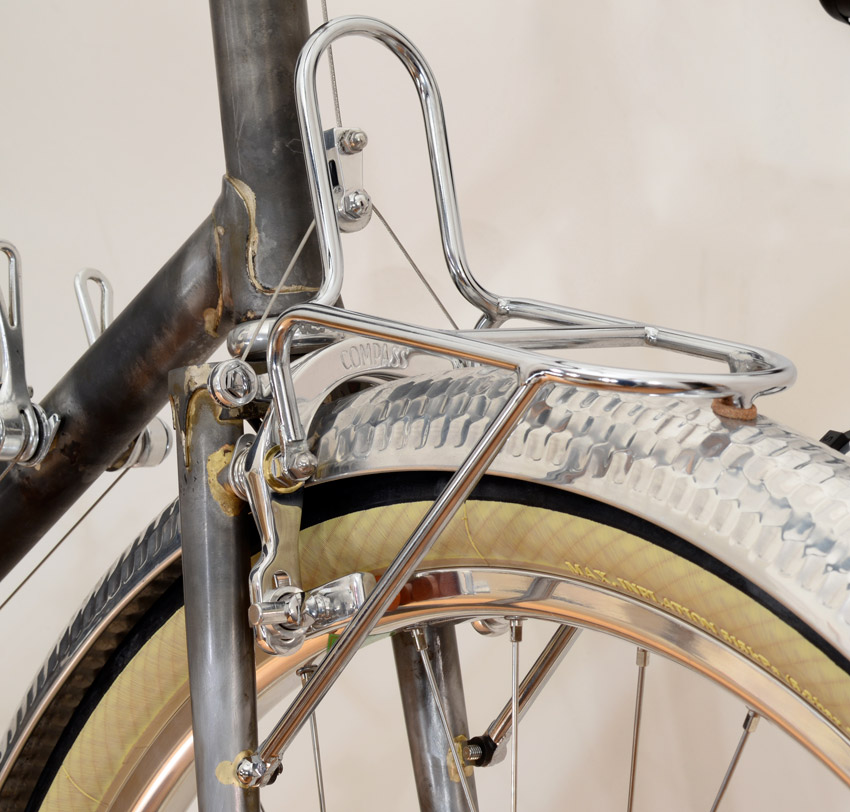Compass Centerpull Brakes

When we started Compass Bicycles, we dreamed of a new centerpull brake. We started developing and testing right away, but it has taken a few years for that work is coming to fruition. We just received the first production samples! The new Compass brakes will be in stock in early November.
For a bike with wide tires, centerpull brakes with brazed-on pivots are the best brake option. With pivots on the fork blades, there is little flex compared to a sidepull (or dual pivot) brake that reaches all the way around the tire. And since the pivots are close to the fork crown, they don’t twist like those of cantilever brakes. As a result, centerpull brakes offer more brake power and better modulation than other rim brakes. (The fact that Shimano’s latest rim brakes also use pivots high up on the fork blades shows that we aren’t the only ones who have figured this out.)
Of all the centerpull brakes, the Mafac Raids stand out. Mafac designed them in the 1970s, when they had decades of experience with this type of brake. The relationship between the upper and lower arms is perfect, which means you get lots of brake power, yet the pads don’t have to be set very close to the rims to prevent the brake levers from bottoming out. The brakes work well both with modern aero levers and with traditional levers. (Their cable pull is right in the middle between sidepull and cantilevers.) We tried many other centerpull brakes, but none came close in performance and feel.
During the development of our brakes, we did finite element analyses of various centerpull brake arms. We found that they varied greatly in their stiffness. Once again, the Mafac Raid came out on top. So when it came to decide on the shape and general design of our brakes, we couldn’t improve on the Raids.

We wanted a lightweight brake, so of course we forged the brake arms. Like the Mafac originals, our new brakes use custom hardware throughout – a huge project when you look at how many special bolts, nuts and washers there are on these brakes. (When you design a brake for standard screws that you can buy at hardware stores, you inevitably have to compromise weight and performance.) The hardware is made from chrome-plated steel, which is stronger than stainless steel.
We did improve a few things compared to the original Mafacs:
- We made the arms slightly thicker, to make sure the brakes work with the higher brake forces generated by modern pad compounds. The weight gains are minimal.
- The bushings of the original were cheap plastic and often developed play. Ours are special IGUS bearings that should last a long time.
- The original pad holders were made from stamped aluminum, and the posts could come loose. Ours are cast as a single piece, with integrated posts.
- The mounting bolts of the Mafacs, with their thin heads, also are known to fail when you aren’t careful during tightening. Ours are stronger, with integrated washers based on a René Herse design.
- We improved the finish of the arms and the plating of the screws.
- Our braze-on pivots don’t have the ugly aluminum plates to hold the spring. Instead, there is a ring with the spring hole that the builder brazes onto the post. (The photos still show the Mafac/Dia Compe braze-ons, since ours weren’t ready when the frame was built.)

To go with the brake, we’ll also offer a small rack to support a handlebar bag. The rack is made in Japan from CrMo tubing, so it is very light, yet strong. It’s patterned after the racks René Herse made for his randonneur bikes. The rack requires braze-ons on the fork, so it’s not a retrofit. If you plan to get a new bike, these brakes and rack are a big step forward.
We’ve been testing prototypes for quite a while, and we are excited that the new brakes will be available soon. We’ll also offer the hardware separately, so you can make your old Mafacs as good as new with new bushings, new hardware and new pads.


